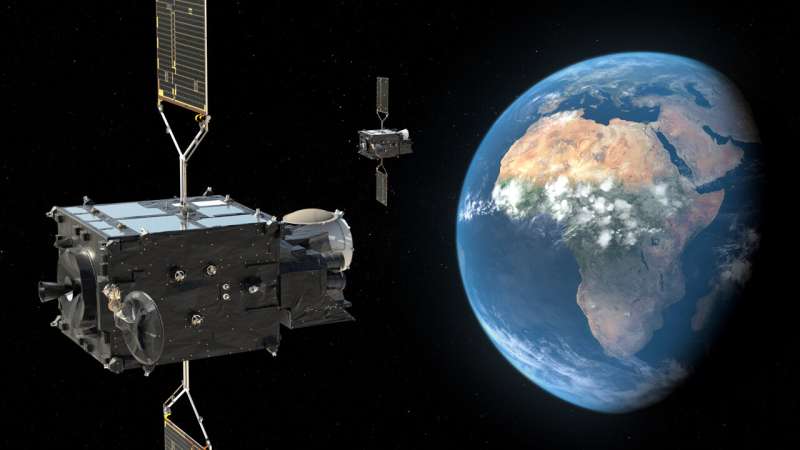LEO satellite cluster to provide secure digital military intelligence from 2024
Friday, 09 September 2022 16:09 BAE Systems is set to launch its first multi-sensor satellite cluster into low Earth orbit in 2024 to deliver high-quality information and intelligence in real time from space to military customers. Known as AzaleaTM, the group of satellites will use a range of sensors to collect visual, radar and radio frequency (RF) data, which will be analysed by on board machine learning on edge processors t
BAE Systems is set to launch its first multi-sensor satellite cluster into low Earth orbit in 2024 to deliver high-quality information and intelligence in real time from space to military customers. Known as AzaleaTM, the group of satellites will use a range of sensors to collect visual, radar and radio frequency (RF) data, which will be analysed by on board machine learning on edge processors t Blue Canyon and SEAKR deliver first flight unit and payloads for Blackjack Program
Friday, 09 September 2022 16:09 Small satellite manufacturer and mission services provider Blue Canyon Technologies, LLC, and SEAKR Engineering, LLC, wholly owned subsidiaries of Raytheon Technologies, has announced that they have delivered one Saturn-class microsat bus and completed acceptance testing of the first two of twelve Pit Boss Battle Management Command, Control and Communication payloads for the Defense Advanced Res
Small satellite manufacturer and mission services provider Blue Canyon Technologies, LLC, and SEAKR Engineering, LLC, wholly owned subsidiaries of Raytheon Technologies, has announced that they have delivered one Saturn-class microsat bus and completed acceptance testing of the first two of twelve Pit Boss Battle Management Command, Control and Communication payloads for the Defense Advanced Res MIT students contribute to success of historic fusion experiment
Friday, 09 September 2022 16:09 For more than half a century, researchers around the world have been engaged in attempts to achieve fusion ignition in a laboratory, a grand challenge of the 21st century. The High-Energy-Density Physics (HEDP) group at MIT's Plasma Science and Fusion Center has focused on an approach called inertial confinement fusion (ICF), which uses lasers to implode a pellet of fuel in a quest for ignition.
For more than half a century, researchers around the world have been engaged in attempts to achieve fusion ignition in a laboratory, a grand challenge of the 21st century. The High-Energy-Density Physics (HEDP) group at MIT's Plasma Science and Fusion Center has focused on an approach called inertial confinement fusion (ICF), which uses lasers to implode a pellet of fuel in a quest for ignition. HawkEye 360 plans new funding round as it positions to go public
Friday, 09 September 2022 15:43
HawkEye 360 is looking at a new round of funding, and possibly going public in a couple of years, CEO John Serafini said Sept. 8.
The post HawkEye 360 plans new funding round as it positions to go public appeared first on SpaceNews.
Walking robots could aid research on other planets
Friday, 09 September 2022 15:05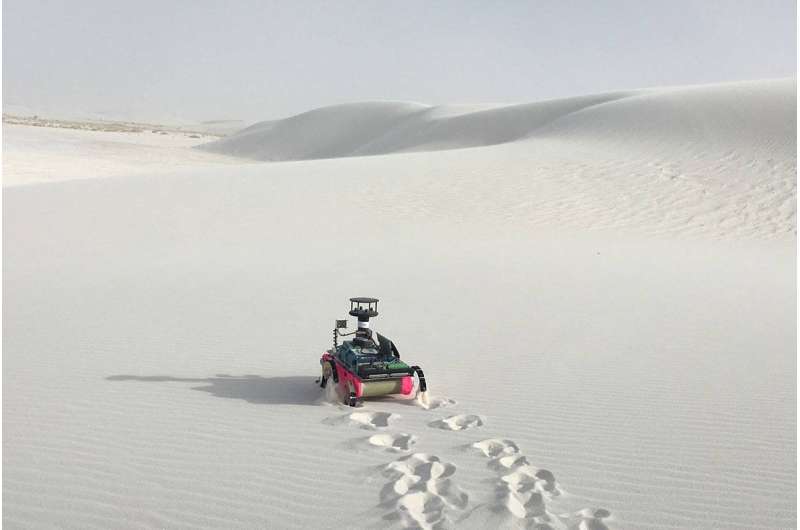
Today NASA uses wheeled rovers to navigate the surface of Mars and conduct planetary science, but research involving Texas A&M University scientists will test the feasibility of new surface-exploration technology: walking robots.
Ryan Ewing, Robert R. Berg Professor in the Department of Geology and Geophysics at Texas A&M, and Marion Nachon, associate research scientist in geology and geophysics, are co-investigators on the project supported by NASA and led by Feifei Qian, a WiSE Gabilan Assistant Professor at the University of Southern California Viterbi School of Engineering. The aim of the research is to create and test walking, or "legged," robots that could more easily glide through icy surfaces, crusted sand and other difficult-to-navigate environments, thus significantly enhancing scientists' abilities to gather information from planetary bodies.
While the Mars Exploration Rovers and other robots have been successfully sent into space, they typically operate based on pre-programmed agendas that require human scientists and engineers to input detailed instructions regarding where to go and what to do prior to the robots' arrival at the planet.
Why do we always need to wait for 'launch windows' to get a rocket to space?
Friday, 09 September 2022 14:00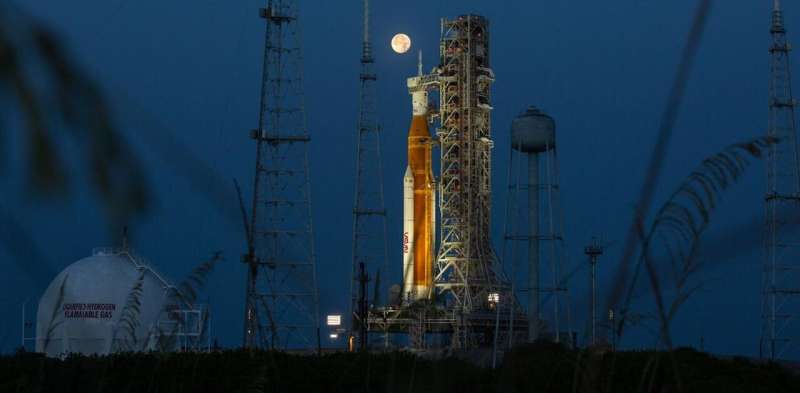
Earlier this week, the Artemis I moon mission was scrubbed again; now we have to wait for a new launch window.
Just 40 minutes before the Space Launch System rocket was set to take off from Kennedy Space Center in Florida on September 3, a leaking fuel line caused engineers to scrub the launch.
So what is a launch window, and why can't a rocket go up at any time? And what does it mean to "scrub" it?
Waiting for the right alignment
A launch window is like waiting for the stars to align. The rocket will be "thrown" off the surface of Earth. This toss must be timed perfectly so the craft's resulting path through space sends it—and everything it's carrying—towards the intended location at the right time.
For Artemis I—a mission to send the Orion capsule into orbit around the moon—the "right time" means waiting for the moon to be as close to Earth as possible (known as "perigee") during its 28-day cycle. Hence why we'll now be waiting roughly four weeks for the next moonshot.
Week in images: 05-09 September 2022
Friday, 09 September 2022 12:12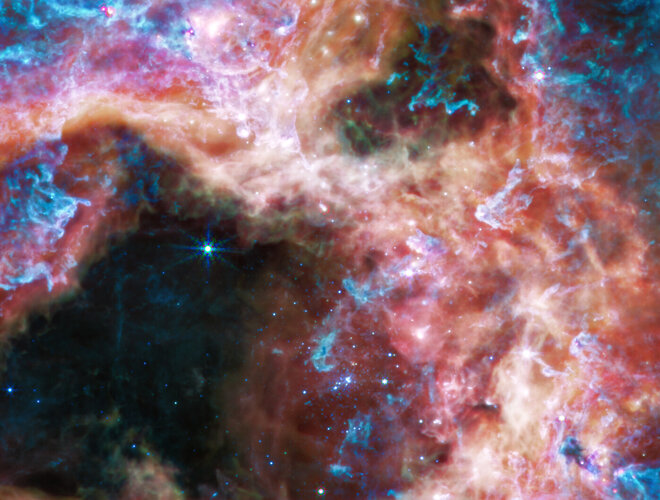
Week in images: 05-09 September 2022
Discover our week through the lens
SpaceX to launch five spare Iridium satellites
Friday, 09 September 2022 10:28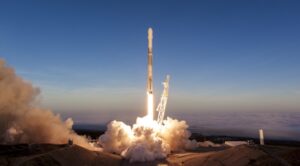
Iridium will launch five of its remaining six ground spare satellites on a Falcon 9 rideshare mission in 2023, the company announced Sept. 8.
The post SpaceX to launch five spare Iridium satellites appeared first on SpaceNews.
This is ESA: now interactive – in 23 languages!
Friday, 09 September 2022 08:40
This is ESA is an illustrated guide to what ESA is and what we do. It has been available in print since 2019. Now this brochure is also available as an interactive publication in all ESA Member State languages.
ESA completes end-to-end test of enhanced, secure Galileo service
Friday, 09 September 2022 08:30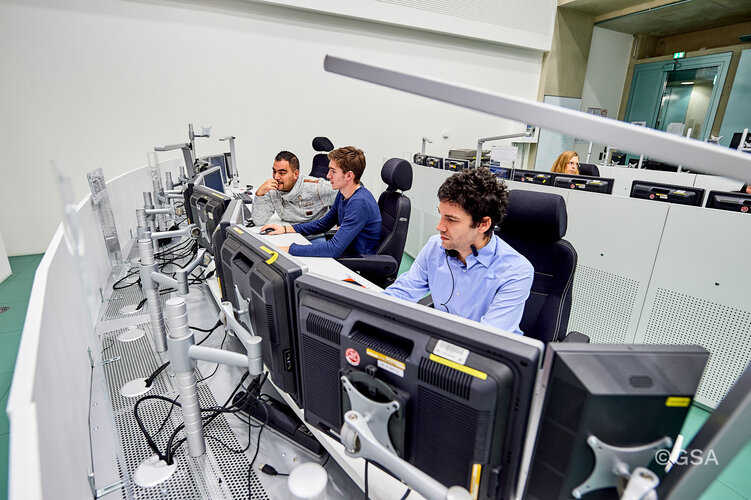
Europe’s Galileo satellite navigation system continues to evolve. For the very first time, end-to-end testing of the Galileo system demonstrated signal acquisition of an improved version of the Public Regulated Service (PRS), the most secure and robust class of Galileo services. The system test extended from the Galileo Security Monitoring Centre in Spain and the Galileo Control Centre in Germany to a Galileo satellite at ESA’s ESTEC technical heart in the Netherlands, which then broadcast in turn to a user receiver.
Why do we always need to wait for launch windows to get a rocket to space
Friday, 09 September 2022 07:48 Earlier this week, the Artemis I Moon mission was scrubbed again; now we have to wait for a new launch window.
Just 40 minutes before the Space Launch System rocket was set to take off from Kennedy Space Centre in Florida on September 3, a leaking fuel line caused engineers to scrub the launch.
So what is a launch window, and why can't a rocket go up at any time? And what does it mea
Earlier this week, the Artemis I Moon mission was scrubbed again; now we have to wait for a new launch window.
Just 40 minutes before the Space Launch System rocket was set to take off from Kennedy Space Centre in Florida on September 3, a leaking fuel line caused engineers to scrub the launch.
So what is a launch window, and why can't a rocket go up at any time? And what does it mea JAXA startup Tenchijin releases free land evaluation app using EO data
Friday, 09 September 2022 07:48 Tenchijin COMPASS enables people who have never used satellite data before to analyze, visualize data, and experience the power of satellite data.
The use of satellite data has been attracting attention, but it has tended to have an image of being expensive and difficult to handle. Therefore, Tenchijin, Inc., a Japan Aerospace Exploration Agency (JAXA) -recognized startup, has been support
Tenchijin COMPASS enables people who have never used satellite data before to analyze, visualize data, and experience the power of satellite data.
The use of satellite data has been attracting attention, but it has tended to have an image of being expensive and difficult to handle. Therefore, Tenchijin, Inc., a Japan Aerospace Exploration Agency (JAXA) -recognized startup, has been support Surprise finding suggests 'water worlds' are more common than we thought
Friday, 09 September 2022 07:48 Water is the one thing all life on Earth needs, and the cycle of rain to river to ocean to rain is an essential part of what keeps our planet's climate stable and hospitable. When scientists talk about where to search for signs of life throughout the galaxy, planets with water are always at the top of the list.
A new study suggests that many more planets may have large amounts of water tha
Water is the one thing all life on Earth needs, and the cycle of rain to river to ocean to rain is an essential part of what keeps our planet's climate stable and hospitable. When scientists talk about where to search for signs of life throughout the galaxy, planets with water are always at the top of the list.
A new study suggests that many more planets may have large amounts of water tha Unraveling a mystery surrounding cosmic matter
Friday, 09 September 2022 07:48 Early in its history, shortly after the Big Bang, the universe was filled with equal amounts of matter and "antimatter" - particles that are matter counterparts but with opposite charge. But then, as space expanded, the universe cooled. Today's universe is full of galaxies and stars which are made of matter. Where did the antimatter go, and how did matter come to dominate the universe? This cosm
Early in its history, shortly after the Big Bang, the universe was filled with equal amounts of matter and "antimatter" - particles that are matter counterparts but with opposite charge. But then, as space expanded, the universe cooled. Today's universe is full of galaxies and stars which are made of matter. Where did the antimatter go, and how did matter come to dominate the universe? This cosm 

